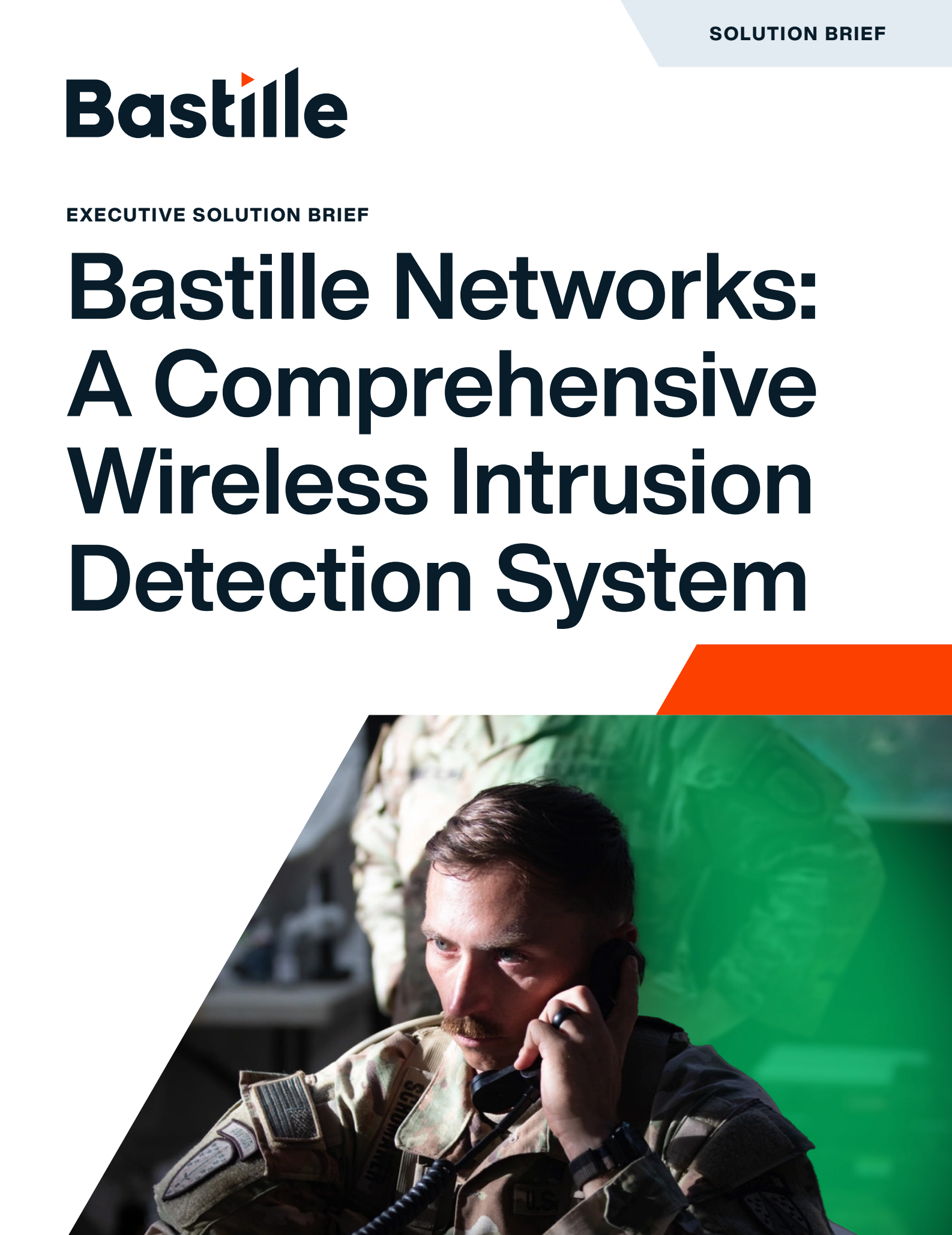What is an RF detector?
A system that captures radio frequency emissions to detect wireless devices and activity.
How does Bastille detect threats others miss?
Through continuous passive monitoring, wideband coverage, and machine learning-driven signal classification.
Is continuous monitoring necessary?
Yes. Threats can appear briefly and at any time. Only constant RF monitoring provides full situational awareness.
Can Bastille locate devices physically?
Yes. Bastille estimates the position of RF-emitting devices using signal analytics.
Is the system passive or active?
Bastille’s system is 100% passive (FCC-certified); it listens to the environment without emitting any signals.
What is an RF detector used for?
An RF (radio frequency) detector is a device used to identify and measure the presence of RF signals within a specified frequency range. Organizations often deploy these detectors in environments where monitoring for unauthorized or unexpected wireless transmissions is critical, such as in data centers, government facilities, corporate offices, or secure laboratories. Their primary function is to help identify and localize sources of wireless activity, including potentially rogue or non-compliant devices.
What sets off an RF detector?
RF detectors alert on the presence of RF emissions within their frequency range, which could include:
- Wi-Fi signals (2.4 GHz, 5 GHz, 6 GHz)
- Cellular communications (LTE, 5G)
- Bluetooth transmissions
- Zigbee or other IoT protocols
- Proprietary wireless protocols or unintentional RF emissions
Depending on the device’s sensitivity and frequency coverage, even brief or low-power transmissions can activate its detection and logging functions.
What is the use of an RF detector?
RF detectors serve a range of security, operational, and compliance functions, including:
- Threat Detection: Identifying unauthorized wireless devices that could indicate potential data exfiltration or espionage.
- Policy Enforcement: Verifying compliance with wireless usage policies in sensitive areas (e.g., no-phone zones).
- Spectrum Monitoring: Tracking usage across frequency bands to identify interference or inefficiencies.
- Forensics and Response: Providing evidence for investigations into wireless security incidents.
How do RF detectors work?
RF detectors monitor the electromagnetic spectrum across specific frequency ranges and use antennas and signal processing components for:
- Scan for Emissions: Continuously monitor the RF environment to detect any signals in the monitored frequency range.
- Characterize Signals: Identify signal types, strength, duration, and patterns.
- Trigger Alerts or Logging: Flag transmissions that match predefined criteria (e.g., unauthorized protocols or channels).
- Support Localization: With multiple sensors, some systems can estimate the physical origin of RF emissions.
Advanced systems may also correlate RF activity with timestamps, device profiles, or other telemetry to support incident response and analytics.
What is RF detection in wireless systems?
RF detection in wireless systems refers to the capability of identifying and analyzing radio frequency emissions as part of wireless infrastructure or security architecture, which includes:
- Detecting and classifying wireless protocols.
- Recognizing behavioral anomalies in RF traffic.
- Identifying signal sources that deviate from expected patterns or policies.
This functionality is integral to Wireless Intrusion Detection Systems (WIDS) and is used to secure environments from unauthorized or malicious wireless activity.
Can RF detection prevent wireless threats and data leaks?
Yes, when integrated into a broader security strategy, RF detection can help prevent wireless threats and data leaks by:
- Identifying Rogue Devices: Detecting unauthorized access points, hotspots, or modems
- Preventing Exfiltration: Alerting on RF transmissions used to bypass network protections
- Monitoring for Policy Violations: Enforcing wireless usage restrictions in sensitive areas
- Detecting Malicious Activity: Identifying unusual transmission patterns from devices linking trusted infrastructure
However, the effectiveness of prevention depends on detection coverage, response protocols, and integration with security operations.







